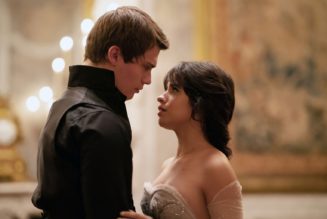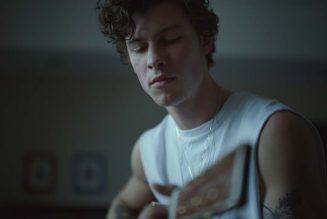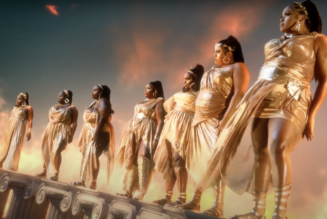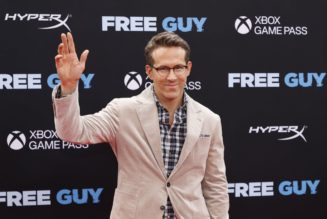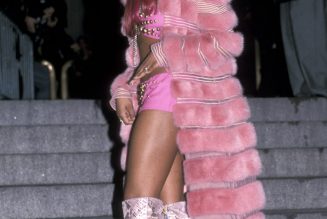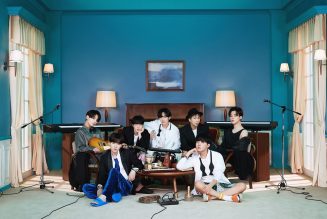By Sara Radin
“Moisture is the essence of wetness, and wetness is the essence of beauty,” famed male model Derek Zoolander says from a television screen, dressed as a mermaid. The audience sees the commercial at exactly the right moment: Derek has just returned home after quitting modeling. He wants to prove to his dad and brothers he, too, can work in the coal mine despite being completely clueless and lacking any sort of physical endurance.
For the occasion, Derek shows up at the small-town bar in a head-to-toe python outfit (matching suitcase included). The irony and juxtaposition of his look against the rough vibe of the mining town are exactly what makes Zoolander — a 2001 movie about a washed-up supermodel who is brainwashed into killing the prime minister of Malaysia, which celebrates its 20th anniversary today — so special. With its unforgettable one-liners and iconic outfits, including one Galliano-inspired couture look made from literal trash, the film has cemented its cult status.
As Gen Z’s nostalgia for the low-rise jeans and whale tails of the early aughts has found a place on TikTok and catwalks alike, Zoolander’s fashion, which encapsulated the era’s style while also parodying it, is prime for revisiting. That’s why MTV News sat down with the film’s costume designer, David Robinson, to break down its most iconic looks.
 Paramount Pictures/Getty Images
Paramount Pictures/Getty ImagesMTV News: What drew you to the story? What was the process of translating the script for you?
David Robinson: I started the job five weeks before we shot because they fired a previous designer and brought me on. There were no costumes. So there was a push to act fast, and it was fun. I actually tried to take the fashion aspect of it very seriously. My first approach, the first thing I pitched to Ben [Stiller], was having each scene be a different editorial style.
MTV News: What did that look like?
Robinson: There was Helmut Newton for the funeral. [Mario] Testino for Hansel’s loft. It gave every scene this particular look — very low angle, black and whites. That’s still there, but then Ben was like, “No, no, no.” At this point, in 1999, teenagers didn’t read those magazines. They really didn’t have that kind of awareness of fashion. He wanted the jokes and the humor to be contextual. In other words, they would laugh at whether you knew anything about fashion or not.
I went back to the drawing board and said, for the funeral, it’s really about how clueless Derek is. Putting him in all white at the funeral or putting him in a python suit with matching luggage at the coal mine, those became the jokes that we carried through. I think it’s why the movie probably survived because, if we tied the fashion moments or ideas of 1999, it would’ve just looked dated. But the jokes are really not about that. They’re about the character and how clueless he is.
MTV News: The funeral outfit was one of the things that I noticed. So I’m glad you mentioned that. How did you work on the development of the characters through the costume?
Robinson: With Katinka, Milla Jovovich’s character, Ben clear made it clear she was this femme fatale. Super sexy and beautiful, but also deadly. No one does that better than Mugler. So I went through the femme fatales of all his fashion shows and picked out a number of them. And that became how we approached her.
MTV News: Talk to me about Mugatu.
Robinson: We got to explore the vanity of that character. Ben loved the idea of him always having his name on all of his costumes, so we always put prominent branding on everything, some of which didn’t even make it in the movie. I also worked with the set designers, depending on what they were doing. One set is all red, so that’s why we get him in black and gray, so he would pop against that.
 Paramount Pictures/Getty Images
Paramount Pictures/Getty ImagesMTV News: What about the reporter, Matilda Jeffries?
Robinson: With Christine Taylor, it was interesting trying to find things for her that read dorky and out of style, but at the same time, it really just looked ugly. So that was kind of the brief on her
As far as Ben went, he really liked a variety of things. It wasn’t just the black Lamaze suit, times 10. He had so many different looks in that movie. There were the boucle hats and red leather patches. We tried to find different, interesting, fun, colorful things for him.
It opens with him in that Gucci printed scarf and sweater, which I’m sure made people in the fashion industry gasp with horror. But it’s funny. It was just so obviously very luxurious and expensive and kind of over the top. That was my approach, to find humor in the context.
MTV News: What about Hansel?
Robinson: Hansel is a very new-age hippie. We made all of his stuff. He was a very fun character for me, and Owen [Wilson] was game all the way.
MTV News: So you made some of the costumes and then you sourced pieces for some of them?
Robinson: For Ben, I think we made pretty much everything. I remember there was one suit from Costume National, which was, I think, the only thing of his that we actually purchased. Actually, the white trench coat was from Gucci. The python suit we made. There was no cooperation from the fashion industry because they were very down on the MTV video that was the source material. So when I mentioned that’s what I was doing, the movie version of that, the doors slammed shut. You know, you really can’t make fun of something if you are in on it, so it didn’t bother me.
MTV News: How did you decide what to dress them in for different scenes?
Robinson: Just looking at the script and the settings. A lot of it had to do with the set and the location. It wasn’t like a regular movie where you’re trying to make it plausible. There was much more about making it a pictorial.
MTV News: What about the scene at the gas station?
Robinson: Oh my god. You know, that was not CGI. We freaking blew up a gas station in SoHo. I don’t think I’ll ever be able to do that again. I remember when we did it, car alarms went off for three blocks. It was quite an explosion. But it was Ben’s idea to have them wear bright colors and all different colors. You wanted it to feel like a Pepsi commercial with everyone having a great time.
MTV News: Is there anything else you feel is worth mentioning?
Robinson: I think that the fact that it isn’t really about fashion in 1999, but more just about vanity in general, is why the movie has held up. I think social media has followed the footprint of Zoolander to some degree. In 1999, there was no Instagram, there was no Facebook. But here, you have Derek Zoolander and Hansel branding themselves and making themselves into these celebrities out of nothing, which now people are doing on Instagram and Facebook just out of their own taste or their own imagination. I think that’s why Zoolander has an enduring audience, because people find it funny but, at the same time, they can see themselves in it.


